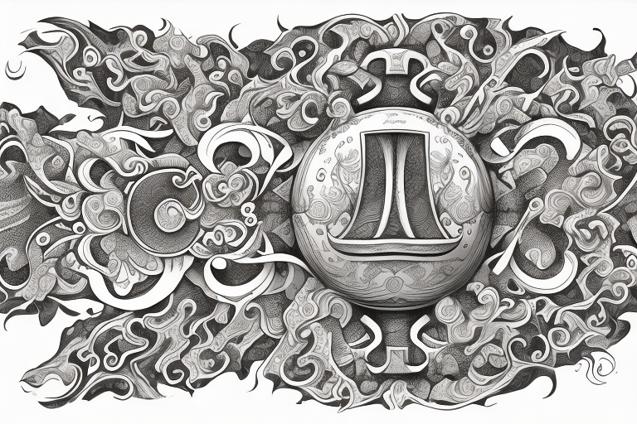
Transform your travel journal into a cherished keepsake with the beautiful art of calligraphy - elevate your memories and add a touch of elegance to your sailing adventures.
The Top Calligraphy Techniques for Your Travel Journal
Sailing the open seas with your family is an adventure like no other. As you explore new horizons and create unforgettable memories, documenting your journey in a travel journal is a fantastic way to preserve these experiences. One way to make your travel journal even more special is by incorporating the beautiful art of calligraphy. In this article, we will explore the top calligraphy techniques that you can use to elevate your travel journal and make it a cherished keepsake for years to come.
What is Calligraphy?
Calligraphy is the art of beautiful handwriting. It is a skill that has been practiced and refined for centuries, with roots in various cultures and traditions. Calligraphy can be done with a variety of tools, including brushes, pens, and even digital devices. The key to mastering calligraphy is practice, patience, and a steady hand.
Why Incorporate Calligraphy into Your Travel Journal?
Incorporating calligraphy into your travel journal can add a touch of elegance and personalization to your memories. It can transform your journal from a simple log of events into a work of art that reflects the beauty and excitement of your sailing adventures. Calligraphy can also be a relaxing and meditative hobby to practice while at sea, providing a creative outlet and a way to unwind after a day of exploration.
Calligraphy Techniques for Your Travel Journal
Now that we’ve covered the basics of calligraphy and its benefits, let’s dive into the top techniques that you can use to enhance your travel journal.
1. Choosing the Right Tools
Before you begin practicing calligraphy, it’s essential to choose the right tools. Here are some recommendations for getting started:
-
Calligraphy pens: There are various types of calligraphy pens available, including dip pens, fountain pens, and brush pens. Dip pens require you to dip the nib into ink, while fountain pens have a built-in ink reservoir. Brush pens have a flexible brush-like tip that can create a wide range of stroke widths. Choose the type of pen that you feel most comfortable with and that suits your desired calligraphy style.
-
Ink: When selecting ink for your calligraphy, consider factors such as color, permanence, and drying time. Waterproof ink is a good choice for travel journals, as it won’t smudge or bleed if your journal gets wet.
-
Paper: High-quality paper is essential for calligraphy, as it prevents ink from bleeding or feathering. Look for smooth, heavyweight paper that is specifically designed for calligraphy or fountain pens.
2. Learning Basic Strokes
Before diving into specific calligraphy styles, it’s essential to learn and practice the basic strokes that form the foundation of calligraphy. These strokes include:
-
Upstrokes: Light, thin lines created by moving the pen upwards.
-
Downstrokes: Thick, bold lines created by applying pressure and moving the pen downwards.
-
Ovals: Both open and closed ovals are essential shapes in calligraphy.
-
Loops: Ascending and descending loops are used in many letterforms.
Practice these basic strokes regularly to build muscle memory and improve your control over the pen.
3. Mastering Popular Calligraphy Styles
There are numerous calligraphy styles to choose from, each with its unique characteristics and charm. Here are some popular styles that you can learn and incorporate into your travel journal:
-
Copperplate: A traditional and elegant script characterized by its thick downstrokes and thin upstrokes, often used for formal invitations and documents.
-
Italic: A slanted, flowing script that is easy to read and versatile, making it a popular choice for beginners.
-
Brush lettering: A modern and expressive style created with brush pens, allowing for a wide range of stroke widths and a more casual, artistic look.
-
Gothic: A dramatic and ornate style featuring angular letterforms and intricate details, perfect for adding a touch of historical flair to your journal.
Choose one or more styles that resonate with you and practice them regularly to develop your skills.
4. Experimenting with Flourishes and Embellishments
Once you’ve mastered the basic strokes and calligraphy styles, you can start adding flourishes and embellishments to your lettering. These decorative elements can add personality and flair to your travel journal, making it truly unique. Some ideas for flourishes and embellishments include:
-
Swashes: Elegant, sweeping lines that extend from the beginning or end of a letterform.
-
Ligatures: Connecting two or more letters with a single stroke, creating a seamless flow between the characters.
-
Banners and borders: Decorative frames and borders can be used to highlight important dates, locations, or quotes in your travel journal.
-
Illustrations: Incorporate small illustrations or doodles related to your sailing adventures, such as anchors, compasses, or marine life.
5. Practicing Consistency and Spacing
An essential aspect of beautiful calligraphy is consistency in letterforms and spacing. To achieve this, practice writing the same letters and words repeatedly, focusing on maintaining consistent stroke widths, angles, and letter heights. Additionally, pay attention to the spacing between letters and words, ensuring that they are evenly distributed and visually balanced.
Final Thoughts
Incorporating calligraphy into your travel journal can transform it into a beautiful and unique keepsake that you and your family will treasure for years to come. By choosing the right tools, mastering basic strokes and popular styles, and experimenting with flourishes and embellishments, you can create a stunning visual record of your sailing adventures. Remember, practice makes perfect, so be patient with yourself and enjoy the process of learning and refining your calligraphy skills.